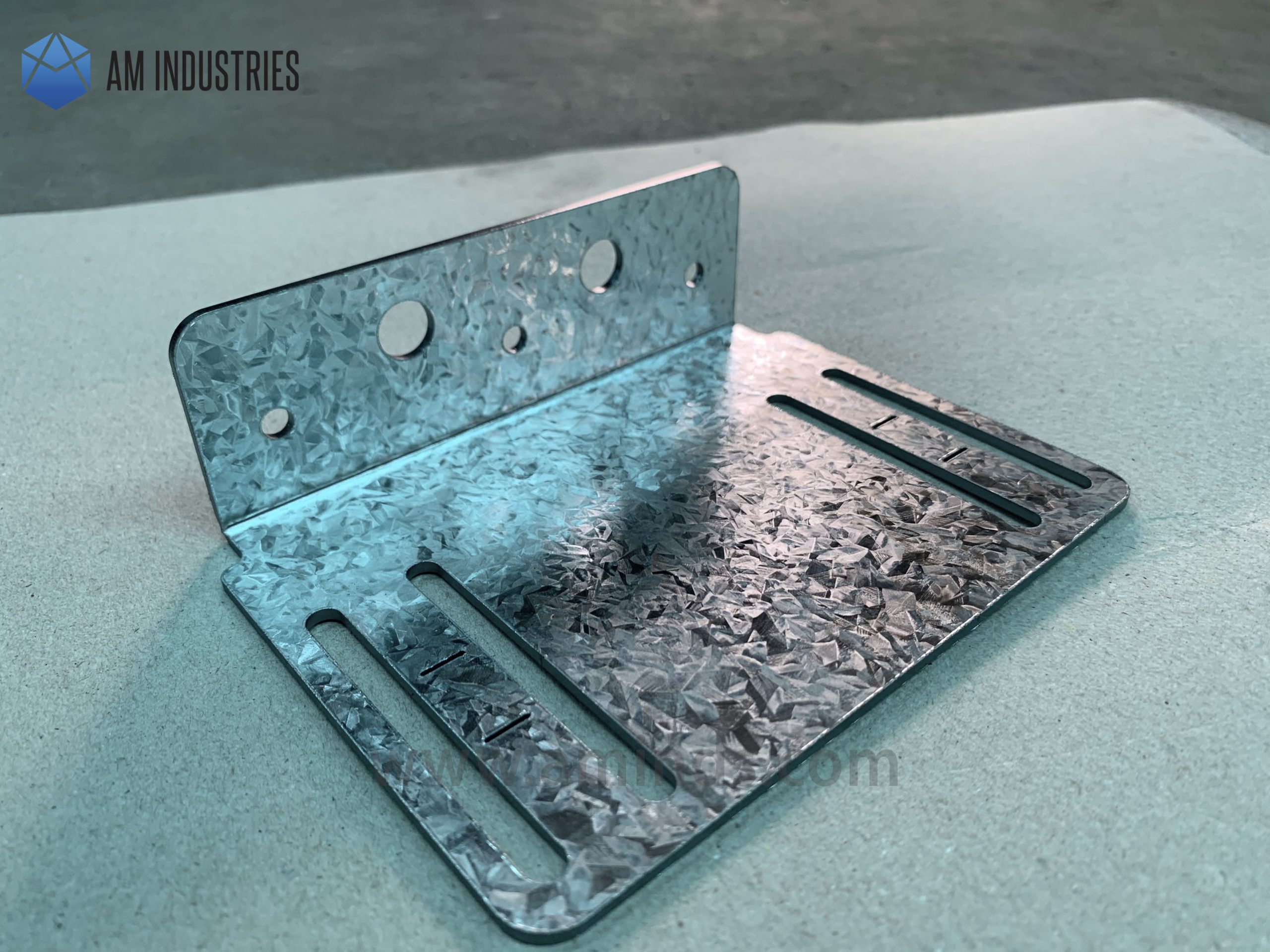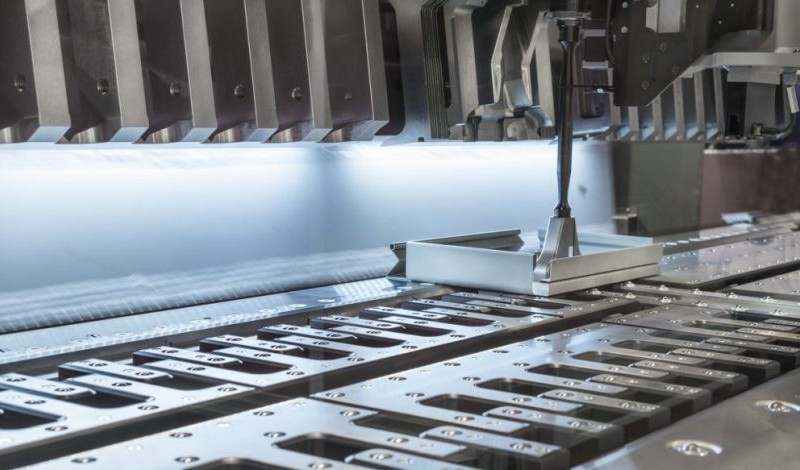How Metal Stamping Changes Production Performance
How Metal Stamping Changes Production Performance
Blog Article
Unleashing the Possible of Steel Stamping: Professional Tips and Best Practices Disclosed
In the world of steel marking, where accuracy and effectiveness power supreme, the pursuit to maximize procedures and unlock covert potentials is a continuous pursuit. As we browse with the elaborate world of metal marking, a better look at the intricacies of tooling design, material selection, manufacturing effectiveness, quality control, and emerging patterns promises a prize trove of understandings waiting to be discovered.
Tooling Design Optimization
Optimizing tooling style is crucial for improving performance and accuracy in steel stamping processes. A well-balanced tooling layout can substantially affect the top quality and cost-effectiveness of steel marking operations. By meticulously considering elements such as product option, die configuration, and component geometry, producers can simplify manufacturing processes and enhance total item top quality.
One trick aspect of tooling design optimization is picking the most suitable products for the dies and punches utilized in the stamping process. Proper die layout can aid protect against problems such as wrinkling, tearing, and extreme springback, leading to greater production yields and decreased scrap rates.
Moreover, optimizing component geometry via tooling design can aid minimize material waste and manufacturing time. By meticulously forming dies and punches to match the preferred component specifications, suppliers can attain tighter tolerances and improved component top quality. On the whole, investing time and sources in maximizing tooling style can result in considerable long-term advantages for metal marking procedures.

Material Selection Methods
Purposefully selecting materials for metal marking tooling is paramount for making sure toughness and performance in manufacturing procedures. When choosing products for metal marking applications, several vital aspects should be taken into consideration. The first factor to consider is the sort of material being marked. Different materials, such as aluminum, stainless-steel, or copper, call for certain tooling products to ensure optimum performance and long life.
An additional crucial element in material selection is the predicted manufacturing quantity - Metal Stamping. For high-volume production runs, tooling products with premium wear resistance and durability, such as device steels or carbide, are often favored to hold up against the rigors of constant stamping operations
Furthermore, the complexity of the stamping design and the needed accuracy additionally play a significant function in material choice. For complex stamping patterns or limited tolerances, products with high thermal conductivity and outstanding machinability, like beryllium copper or device steel alloys, might be better to attain the desired results.
Manufacturing Efficiency Methods
To improve producing outcome and decrease production expenses, executing reliable techniques in steel marking procedures is crucial. Automated steel marking makers can perform jobs with accuracy, uniformity, and at a much faster rate than hand-operated labor, leading to increased productivity and reduced cycle times.
Another technique to enhance manufacturing efficiency is via constant procedure improvement. Carrying out routine audits and efficiency assessments can help recognize bottlenecks, inadequacies, and locations for enhancement within the metal stamping process. By analyzing information and comments from these assessments, manufacturers can implement targeted solutions to enhance operations, increase throughput, and maximize total performance.
Furthermore, adopting lean manufacturing principles, such as 5S methodology and Kanban systems, can help eliminate waste, enhance workflow, and boost general productivity in steel stamping operations. By cultivating a culture of constant renovation and equipping employees to add concepts for efficiency gains, suppliers can unlock the complete capacity of their metal marking processes.
Quality Assurance Procedures
Structure on the structure of reliable production strategies in metal stamping procedures, making certain stringent quality control actions is important for keeping product criteria and consumer More Info contentment. Quality control in steel marking involves organized examination, testing, and monitoring of the manufacturing processes to recognize and correct any inconsistencies or defects that could endanger the end product's integrity (Metal Stamping). Carrying out measures such as normal devices upkeep, in-process assessments, and thorough screening of completed components can help identify problems early and stop expensive rework or product recalls
Normal audits and evaluations of top quality procedures can help determine areas for enhancement and make sure uniformity in product top quality. By fostering a society of quality awareness amongst workers and giving appropriate training on top quality control treatments, makers can boost general item reliability and brand name credibility.

Ingenious Metal Stamping Technologies
Innovations in steel marking technologies have actually reinvented the production market, boosting effectiveness and precision in the production procedure. Servo presses offer exceptional control over the marking procedure, enabling for changes in speed, pressure, and dwell time with remarkable precision.

In addition, the adoption of additive production techniques in metal stamping, such as 3D printing of die parts, has structured the tooling design and production process. This approach permits for higher layout adaptability, quick prototyping, and expense savings in tooling production. By leveraging these innovative modern technologies, producers can unlock new degrees of performance, high quality, and competition in the metal marking sector.
Conclusion
To conclude, the optimization of tooling style, tactical material choice, web reliable manufacturing methods, quality control procedures, and cutting-edge innovations are essential for letting loose the complete capacity of steel stamping. By implementing these ideal methods and expert ideas, suppliers can boost productivity, boost quality, and stay competitive in the steel stamping industry. It is important for companies to continuously assess and improve their processes to achieve success in this area.
As we browse through the detailed world of metal stamping, a better look at the details of tooling style, material selection, manufacturing efficiency, top quality control, and arising fads promises a prize chest of understandings waiting to be discovered. A well-balanced tooling style can significantly impact the quality and cost-effectiveness of metal marking procedures.Structure on the structure of efficient production methods in metal stamping procedures, guaranteeing rigid top quality control actions is essential for keeping item requirements and consumer contentment. Quality control in metal stamping includes organized inspection, testing, and monitoring of the manufacturing refines to determine and remedy any type of deviations or defects that can endanger the look what i found last item's integrity.In conclusion, the optimization of tooling style, tactical product selection, reliable production methods, top quality control procedures, and ingenious modern technologies are crucial for letting loose the complete potential of metal marking.
Report this page